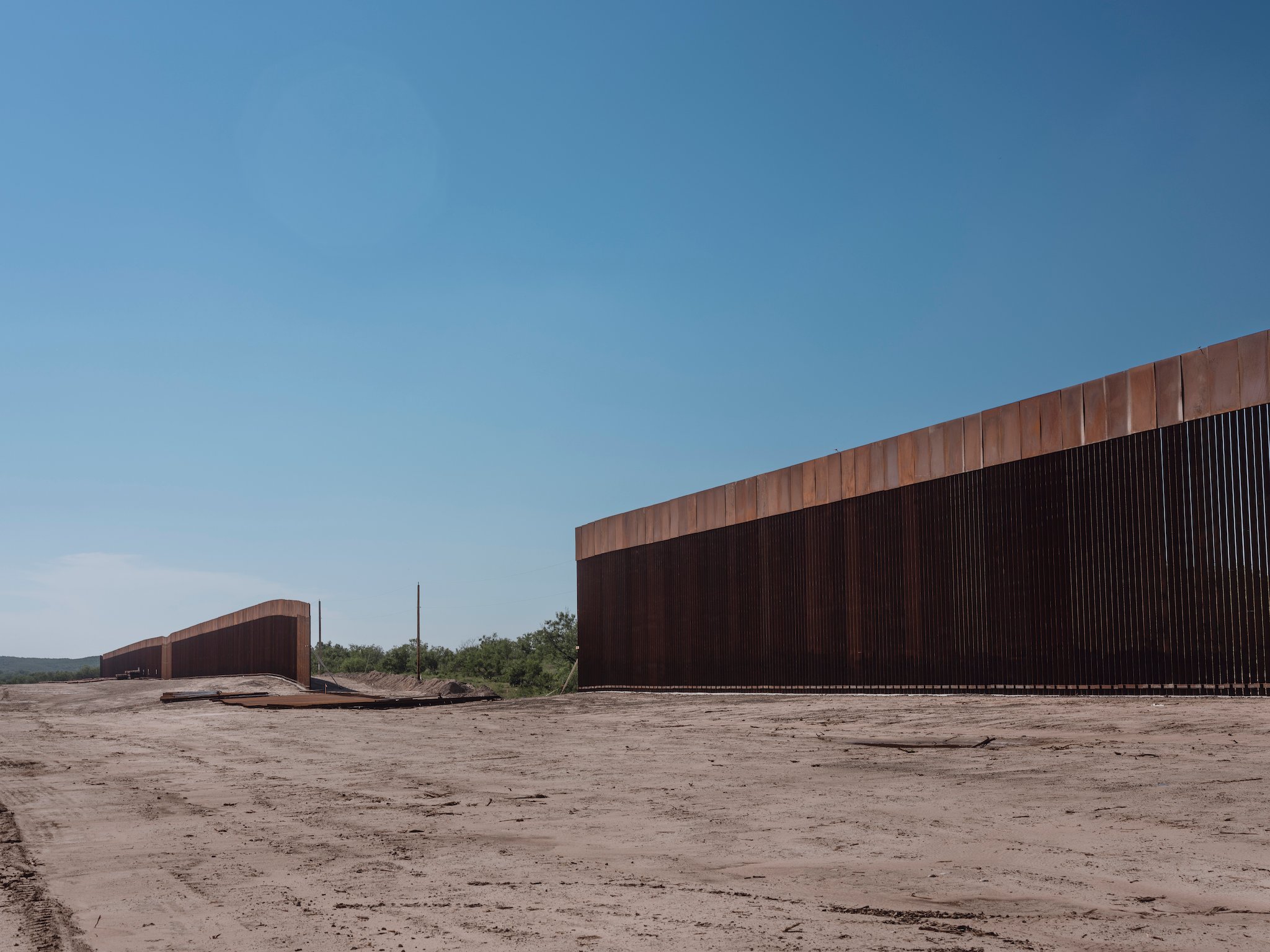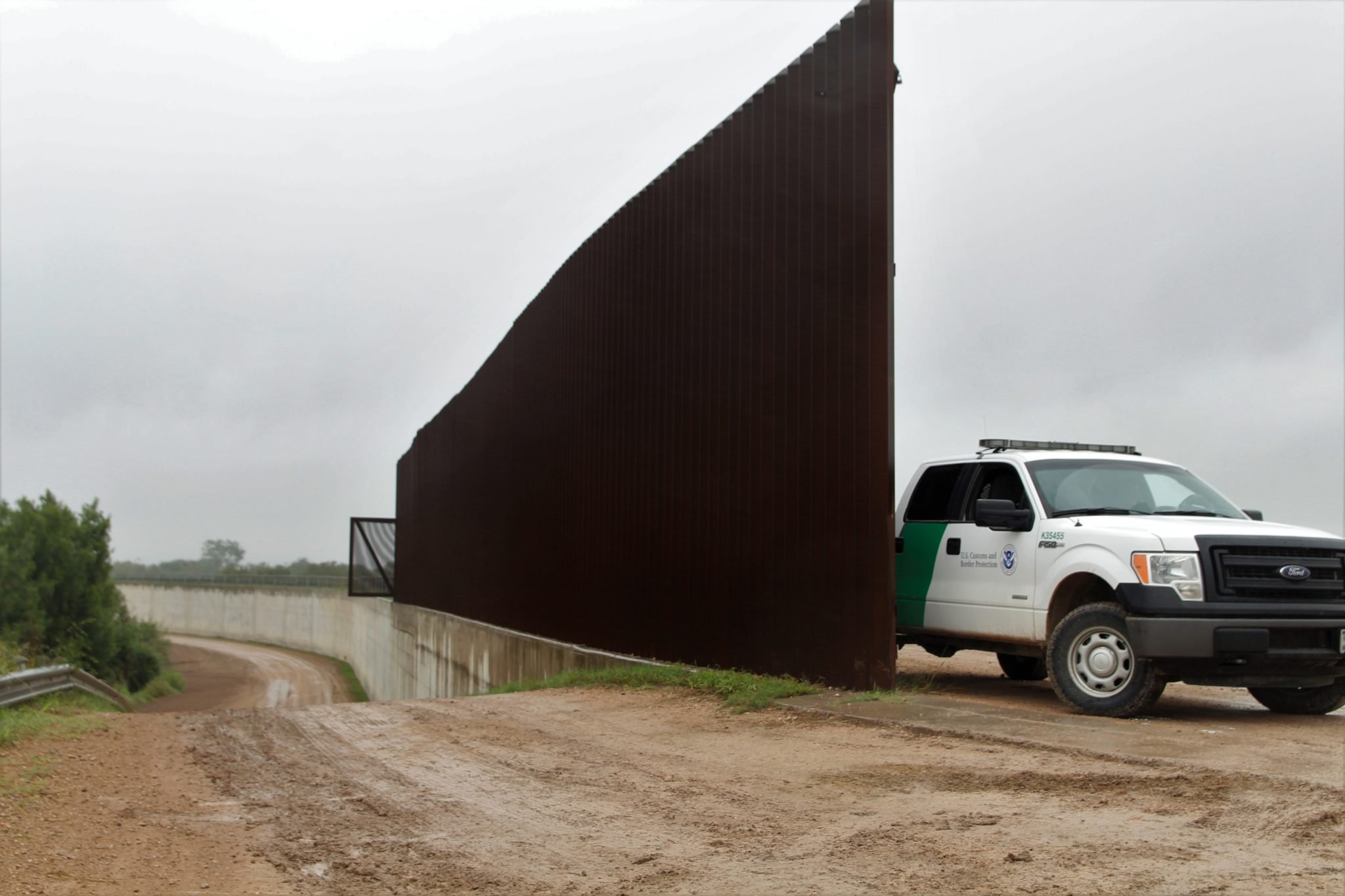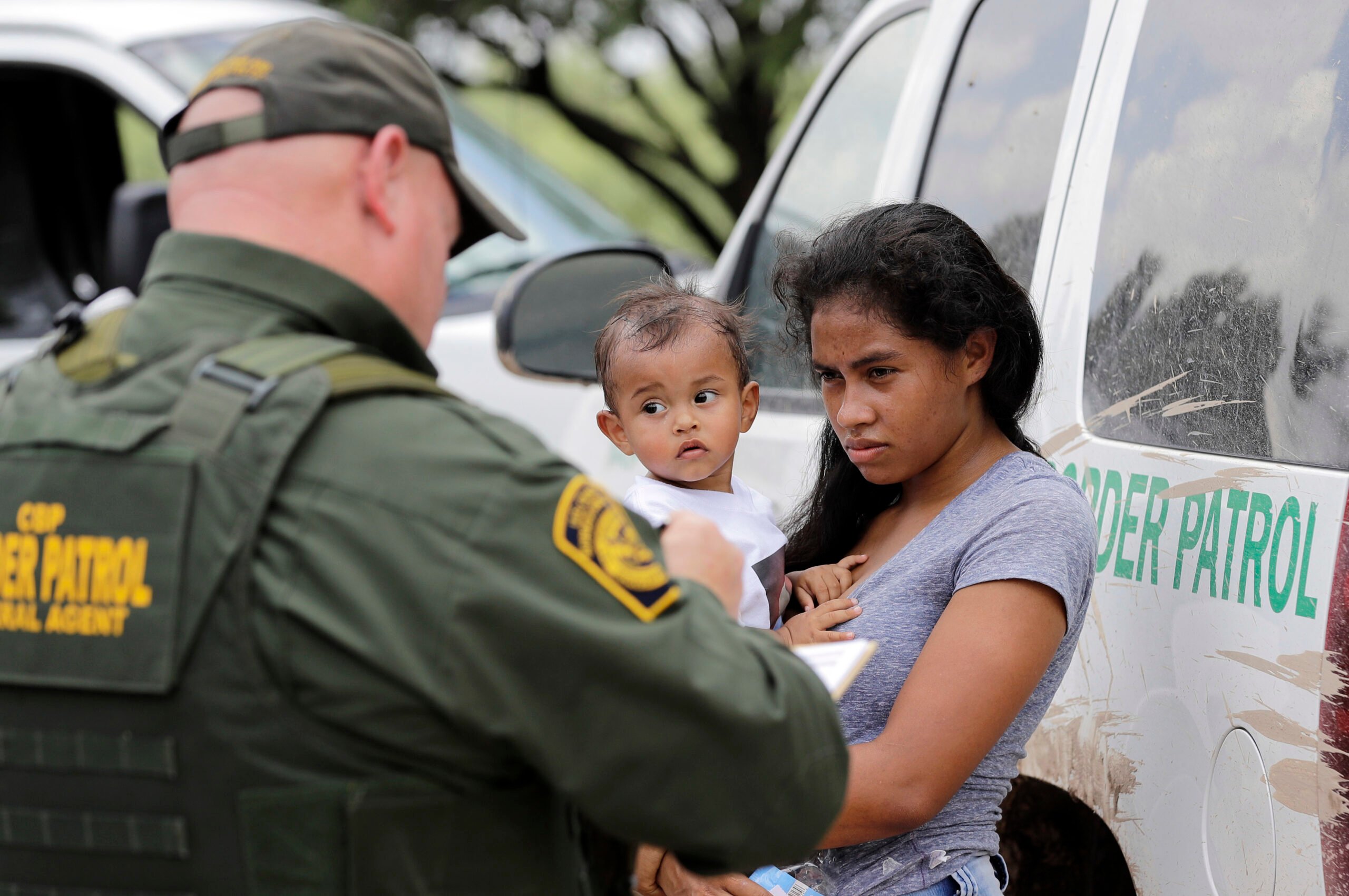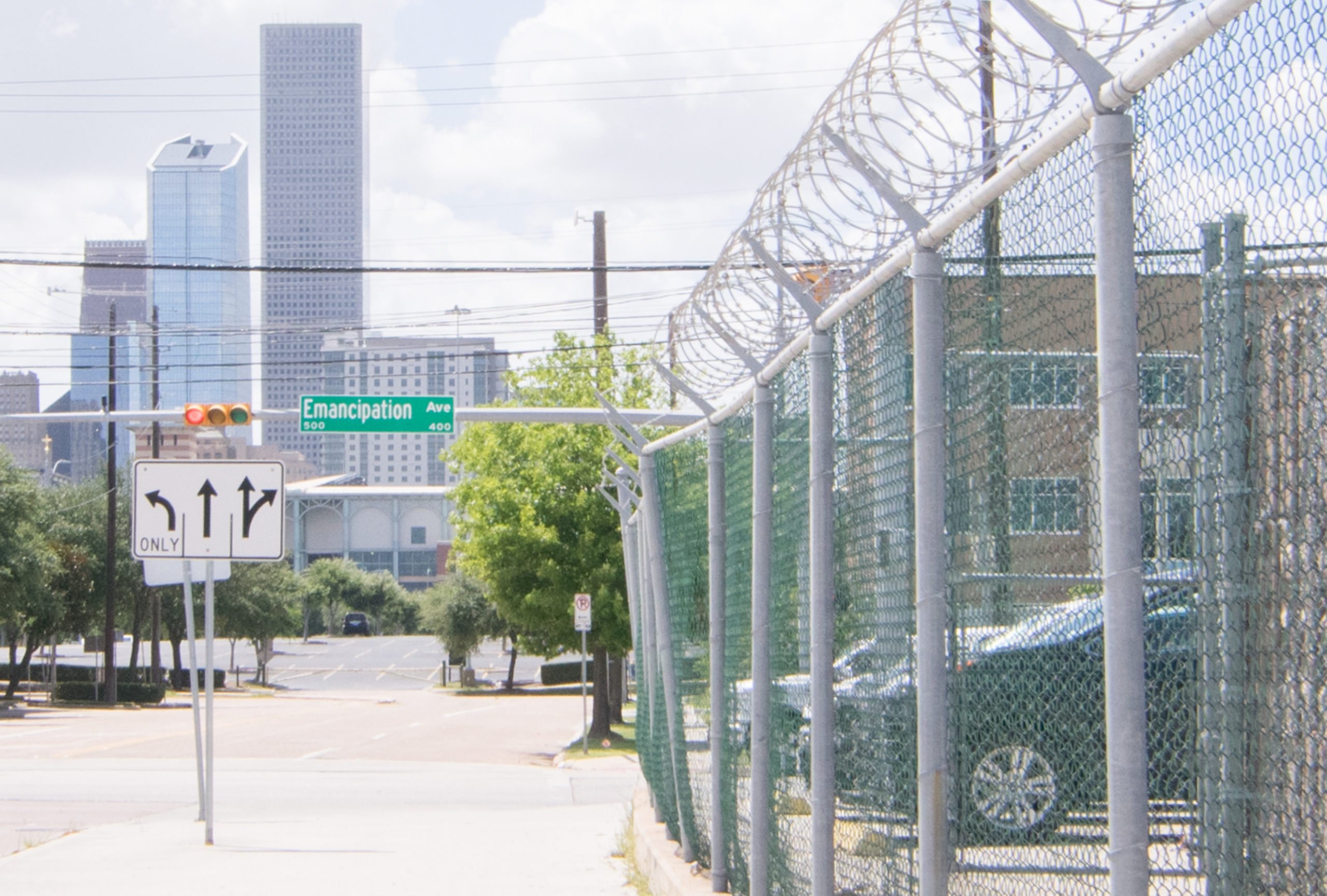
Abbott Lobbies for More Money As Border Wall Burns Through Budget
In the wake of President Joe Biden’s fencing flip-flop, the Texas governor doubles down on his own barrier.

In early October, President Joe Biden announced that his administration would resume building a wall along the U.S.-Mexico border. To do so, Biden suspended several federal laws to accelerate construction in rural Starr County, where former President Donald Trump’s own wall efforts were met with fierce resistance from landowners.
The move is a significant flip-flop from Biden’s 2020 campaign promise to build “not another foot” of wall. This has sparked widespread opposition from the same coalition that opposed Trump’s wall—immigration advocates, border communities, and Democratic lawmakers—who not long ago cheered Biden’s decision in early 2021 to pause all construction of Trump’s wall.
Governor Greg Abbott has been waiting for this moment for two years. He’s seized on this news as a means not only to cast Biden’s efforts as a feeble political ploy, but to promote the progress made on his own pledge to build Texas’ own border wall with state taxpayer funds.
Since Biden’s announcement, Abbott has promoted his own border wall project in over a dozen social media posts—including dramatic drone video footage. “Texas border wall construction continues around the clock,” Abbott wrote this week. “Biden’s border crisis doesn’t rest. Neither does Texas.”
Now, he’s using his third special legislative session of the year to lobby for even more money for his border wall by including a call for more “funding for the construction, operation, and maintenance of border barrier infrastructure.” Republican legislators were quick to act, with House appropriators set to hear a bill next week that would shovel $1.5 billion to the governor’s office for the wall.
“Texas border wall construction continues around the clock. Biden’s border crisis doesn’t rest. Neither does Texas.”
That’s on top of the roughly $1 billion that the GOP-controlled legislature gave Abbott to begin building a state border wall back in 2021. And while the total figures aren’t entirely clear, budget documents suggest that this spring legislators signed off on yet another $1 billion for the next tranche of the governor’s wall for the next two years. As the Texas Observer has extensively reported, Abbott’s border wall scheme has proven similar to the Trump wall that it seeks to replicate—slow, costly, destructive, and divisive. The governor wants to build a wall along up to 800 miles of Texas’ border with Mexico, which, at this rate, could rack up a tab of around $20 billion and take decades to complete.
Abbott’s new and aggressive PR campaign is a stark departure from how he’s typically handled the project since he first announced the initiative about two years ago. That’s in large part because there wasn’t much to boast of as the Texas wall was slow to get off the ground. The governor instead focused his PR efforts on more visceral aspects of his vast Operation Lone Star apparatus, such as deploying National Guard troops to turn back migrants at the riverine line and installing dangerous razor wire traps and floating buoy barriers in the Rio Grande.
Abbott left the Texas Facilities Commission (TFC), a small agency in charge of the state government’s office real estate, in charge of orchestrating the massive, byzantine endeavor that has come to be known in bureaucratic parlance as the Texas Border Infrastructure Program. While the agency was relatively quick to dole out big contracts to a handful of construction firms that had also worked on the Trump wall, the state and its army of hired guns have struggled to secure enough contiguous parcels of land from willing landowners. Lawmakers prohibited the state from using eminent domain to acquire private property for the wall, forcing Texas to negotiate easements with dozens of individual landowners along the border.
But Abbott’s wall efforts have accelerated in 2023 as Texas acquired more and more private property and contractors began razing vast swaths of land and raising 30-foot steel fences on several different tracts along the border—from the west in Val Verde, Maverick, and Webb counties down south in the Rio Grande Valley in Starr and Cameron counties.
By August, the state said it had completed nearly a quarter of its first phase of construction, with 10.6 miles of new wall. The Facilities Commission projects that the rest will be finished by the end of next year, according to agency documents. But the agency says that, to do so, it will burn through the first billion appropriated for the wall in 2021 and need to spend at least “a portion of” the second round of funding that the Lege passed earlier this year. TFC has a total of 110 miles of land in its pipeline—which includes property where the state is already building wall, finalizing acquisition, or actively negotiating—and estimates that it will cost a total of $2.8 billion to complete, according to those records.
That indicates Abbott’s wall is running over budget. TFC claims that is not the case.
“They are not overruns. Not every land easement is the same, and the terrain along the border requires specific engineering requirements,” TFC spokesperson Francoise Luca wrote in response to emailed questions from the Observer. “Those two items are considered as we continue to build the wall in areas identified as the highest priority by the Texas Department of Public Safety.”
The agency’s projected average cost per mile “remain[s] within the $25M to $29M mark and maintain those estimates per mile are dependent on terrain, number of gates, flood plain issues and drainage crossings.”
In late September, Abbott appointees on the Facilities Commission unanimously approved a series of amendments adding more money and mileage to contracts awarded to the firms building the first 44 miles of the wall, bringing the total maximum amount of those contracts to $1.28 billion, per agency records. That’s nearly $300 million more than the nearly $1 billion lawmakers appropriated for the first phase of wall construction back in 2021.
The totals awarded to each firm are: $347 million to Posillico Civil; $290 million to BFBC, a subsidiary of Montana-based Barnard Construction; $249 million to Southwest Valley Constructors, owned by Kiewit; $254 million to Fisher Sand & Gravel; and $138 million to Galveston-based SLSCO, Ltd. The agency has also spent $23 million on the outside firms hired to consult on and manage the project; $43 million for steel bollards; and almost $14 million to buy land to build the wall on.
While construction continues on the first 40 miles, the state is simultaneously laying the groundwork for the next 40 miles, which TFC says it is “well positioned” to complete by December of 2025 with additional funding, according to agency records obtained by the Observer.
TFC announced at its September meeting that four of its current five construction firms—Posillico, BFBC, Southwest Valley, and Fisher—will continue on to build the Texas wall with contracts awarded through a revolving stream of competitive “task orders” that as of now will total no more than $650 million. Agency commissioners also approved a motion empowering TFC Executive Director Mike Novak to unilaterally award those contract orders, a departure from the current process in which commissioners must hold a public meeting to vote on each contract award.
As the state became mired in problems acquiring land—from title issues to landowner resistance—to build through areas with smaller parcels and more property owners like the small border towns south of Laredo or around Roma in western Starr County, the Facilities Commission has pivoted to an alternate strategy: courting the big ranchers with vast land holdings along the border.
The first success on that front came in early 2023 when the state struck a $1.5 million deal to acquire rights to 5 miles of land along the border in the western corner of Webb County from Faith Ranch, which is owned by Stuart Stedman, a political appointee and major donor to Abbott. Fisher Sand & Gravel won the contract to build that segment at a cost of about $120 million, averaging about $25 million per mile. The remote location of the proposed wall required building miles of access roads to the construction site, which Fisher estimated to cost about $4.5 million, according to contract documents obtained by the Observer. The project also required building bridges across the rough terrain, at a cost of nearly $15 million. Fisher will make a profit of $14.3 million on the Faith Ranch project, according to its contract bid.
Since the Faith Ranch deal, the state has continued to seek out big ranchers who’d be open to the state building through their land. By mid-summer, TFC was on the verge of closing deals for three more large land tracts in neighboring Maverick County totaling nearly 25 miles, according to an internal agency presentation from July.
Since then, the Facilities Commission has spent $9.2 million on seven individual transactions buying up land, according to data from the Texas Comptroller. The largest payment was in September, just over $4 million to an LLC called Maverick Land Holdings. The month before, the state signed a land easement with that entity to build a wall through nearly 300 acres of property, according to records recently filed with the Maverick County Clerk’s Office. Records show the owner is Robert Duncan, a Houston-based real estate executive who owns large ranches in Maverick County. The easement agreement stipulates that the state must build the wall “as near as practicable to the northern border of the Rio Grande River.”
Duncan did not respond to the Observer’s emails requesting comment.
It’s not clear who else the state is paying big bucks for border wall land, including a payment of $3.3 million made in September. That’s because TFC began listing most recipients of land payments as “confidential” in its expenditure data for the comptroller, blocking a key source of transparency on the state’s otherwise secretive land acquisition process.
In July and August, the state signed two more big land deals in Maverick County, records show, acquiring two easements to build almost 4 miles of wall on property owned by Dan A. Hughes Jr., a San Antonio oilman and former chairman of the Texas Parks and Wildlife Commission. It’s not clear how much the state paid for the land rights. Hughes confirmed in a brief interview that he signed agreements with the state and was not sure when construction would begin.
Of course, more wall-ready land begets more demands for money. GOP state Representative Jacey Jetton, who filed the new $1.5 billion border wall bill, told the Houston Chronicle that the state’s increased success acquiring land is “really what fueled the request from the governor’s office” for more barrier funding.
In the Operation Lone Star production, Abbott’s border wall is finally taking center stage—and there it will stay. As the TFC aptly puts it, the wall is “the only permanent, enduring element” of the governor’s border security strategy.



